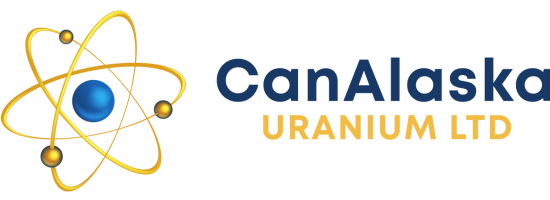Vancouver, British Columbia — Sept. 19, 2007: CanAlaska Uranium Ltd. (TSX-V: CVV) — The Company is pleased to report on the completion of detailed airborne surveys in the Grease River area, as well as an initial two and half months of ground exploration on the project following an accelerated commitment of $1.3 M to summer surveys from Yellowcake PLC as a result of the recent agreement with Uranium Prospects Plc which is now responsible for the majority of the funding for exploration at Grease River.
The current work, financed under the Uranium Prospects / Yellowcake PLC agreement, and operated by CanAlaska, under the direction of Dr Karl Schimann, combined the airborne surveys with ground prospecting and mapping. The project area covers an extensive belt of uranium showings, adjacent to the northern edge of the Athabasca Basin. Regionally this area is characterised by Uranium-Thorium anomalies in lake sediments. Very high uranium values (over 1000 ppm) reported in historical lake sediment samples indicate the presence of further uranium mineralization hosted in basement rocks.
 Click on hyperlink to view in high resolution PDF
Click on hyperlink to view in high resolution PDF
CanAlaska considers the project area to have potential for both basement-hosted unconformity deposits as well as bulk tonnage Rossing style deposits. The extensive nature of the uranium mineralization in lake sediments and the early success from past regional reconnaissance style exploration, give strong indications for definition of drill targets from the summer campaign. The Grease River project area is easily accessible by air from the road-head and airport at Stony Rapids, located to the south of the project area. The basement rocks in this area are interpreted to have been stripped of any overlying Athabasca sandstone, exposing structurally controlled uranium replacement zones, as well as possible larger tonnage intrusive related targets.
Grease River Airborne
CanAlaska contracted Terraquest Ltd to perform the airborne survey program. The 6,900 line-km airborne survey on the Grease River property included high resolution aero-magnetics, horizontal gradiometer, gamma spectrometry, and XDS/VLF — EM, and provided a large number of discrete targets as well as larger formational related uranium enrichment events.
The airborne survey was completed early in the summer and preliminary interpretation of the radiometric data produced some 250 anomalies for field verification by prospectors, or ‘ground truthing’. This initial work has identified a number of new showings or radioactive anomalous areas.
Lake Sediment Sampling
The Grease River claims were staked over combined lake sediment and radiometric anomalies straddling major geological domain boundaries, including the Grease River Shear Zone. The area is known for very high uranium in lake sediments (over 1000 ppm U) as well as several in-situ uranium showings with values up to 1.6 % U3O8.
CanAlaska’s staff sourced and reviewed extensive historical exploration data which included abundant lake sediment sampling over most of the property. CanAlaska’s lake sediment survey in 2007 completed the area not previously surveyed and also included several hundred validation samples in areas of historical anomalies.
Mapping and Prospecting
The 2007 work programme of mapping and prospecting focused on all three claim blocks and identified five interesting showings:
Bradley Lake Occurrence
Strike perpendicular fractures filled with veined pitchblende mineralization hosted within patchy yellow U-stained pink to whitish-pink coarse-grained quartz-feldspar pegmatitic dykes intruding parallel to the foliation of sheared metasediments. Fractures yield readings of between 1,500 to +15,000 cps within 0.2 to 0.8 cm wide pitchblende veinlets and occasional pitchblende blebs up to 1.5 cm in diameter associated with biotite ‘books’ within the pegmatites.
Cochrane Lake Occurrence
Pink to whitish pink coarse-grained feldspar-quartz ± biotite pegmatitic dykes crosscutting biotite-feldspar-quartz gneiss near the contact with a quartz-monzonite intrusion. Local zones yield readings of between 2,000 and 9,000 cps often associated with biotite lenses within the pegmatite.
Grease River Occurrence
Zones of increased radioactivity of between 1,000 to +9,000 cps hosted within silicified leucogranite dykes that crosscut biotite-quartzo-feldspathic gneiss parallel to foliation. The silicified leucogranite intrusions are composed primarily of 45% to 55%, 0.4cm to 1cm diameter, randomly oriented, subhedral to euhedral, white plagioclase feldspar crystals supported within a quartz and quartzo-feldspathic groundmass that that also contains randomly oriented biotite clots and numerous patches of U-staining.
These leucogranite dykes occur along, and emanate from, the contact zone of a large quartz-monzonite intrusion. Zones of higher radioactivity often occur associated with large biotite clots and within fractures of the leucogranite intrusive dykes.
North Stolar Lake Occurrence
Pitchblende mineralization occurring as fracture-filled veinlets and 0.5 to 1 cm diameter occasional blebs of pitchblende hosted in lenses of biotite schist within sheared and intensely foliated granodiorite. The blebs of pitchblende often yield +9,000 cps. Numerous zones within the granodiorite give readings of between 1,300 to +9,000 cps with no readily apparent pitchblende mineralization.
Tait Lake Area
Numerous zones that yield radiometric readings of 300 to 2,500 cps hosted within medium-grained granite and coarse-grained quartz-feldspar pegmatitic dykes that crosscut biotite-quartzo-feldspathic to biotite-quartz-feldspar amphibolitic gneiss.
The 2007 exploration programme, albeit limited to two and a half months of field work, has demonstrated the high potential of the Grease River claims for uranium. It confirmed the strong uranium enrichment in the lake sediment and soils of the area, indicating a regional uranium enrichment and that the uranium is very mobile. This constitutes a very favourable environment for hydrothermal and structure-related enrichment, such as found within the basement in the Eastern Athabasca Basin (Eagle Point, Millenium). The Grease River occurrence described above suggests that a Rossing-type potential may be present as well, enrichment peripheral to intrusions. Further field investigations will be undertaken with the aim of identifying drill targets.
The person responsible for this news release is Peter Dasler, P.Geo.
About CanAlaska Uranium Ltd. — www.canalaska.com
CanAlaska Uranium (CVV — TSX.V, CVVUF — OTCBB, DH7 — Frankfurt) is undertaking uranium exploration in seventeen 100%-owned and two optioned uranium projects in Canada’s Athabasca Basin. Since September, 2004, the Company has aggressively acquired one of the largest land positions in the region, comprising over 2,500,000 acres (10,117 sq. km or 3,906 sq. miles). In 2005/2006, CanAlaska expended over Cdn$15 million exploring its properties in the Athabasca Basin and has delineated multiple uranium targets. Initial drilling results from the West McArthur Project revealed uranium mineralization and significant zones of hydrothermal alteration, indicative of a favourable environment for uranium deposition. Active drilling and exploration continues in the Summer, 2007 exploration season at West McArthur and at 2 other significant projects. The Company’s high profile in the prominent Athabasca Basin has attracted the attention of major international strategic partners. Mitsubishi Development Pty., a subsidiary of Japanese conglomerate Mitsubishi Corporation, has undertaken to provide CanAlaska C$11 mil. in exploration funding to earn 50% of the West McArthur Project. An MOU has also been executed with Hanwha Corporation, a S. Korean conglomerate, to enter into joint exploration of CanAlaska’s Cree East Project.
On behalf of the Board of Directors
“Peter Dasler”
Peter Dasler, P. Geo., President & CEO
Investor Contact: Emil Fung, Vice President, Corporate Development
Tel: +1.604.688.3211 Toll Free (North America) 1-800-667-1870 Email: info@canalaska.com
The TSX Venture has not reviewed and does not accept responsibility for the adequacy or accuracy of this release: CUSIP#13708P 10 2.
This news release contains certain “Forward-Looking Statements” within the meaning of Section 21E of the United States Securities Exchange Act of 1934, as amended. All statements, other than statements of historical fact, included herein are forward-looking statements that involve various risks and uncertainties. There can be no assurance that such statements will prove to be accurate, and actual results and future events could differ materially from those anticipated in such statements. Important factors that could cause actual results to differ materially from the Company’s expectations are disclosed in the Company’s documents filed from time to time with the British Columbia Securities Commission and the United States Securities & Exchange Commission. Not to be construed as an offer to buy or sell securities of CanAlaska Uranium Ltd.

